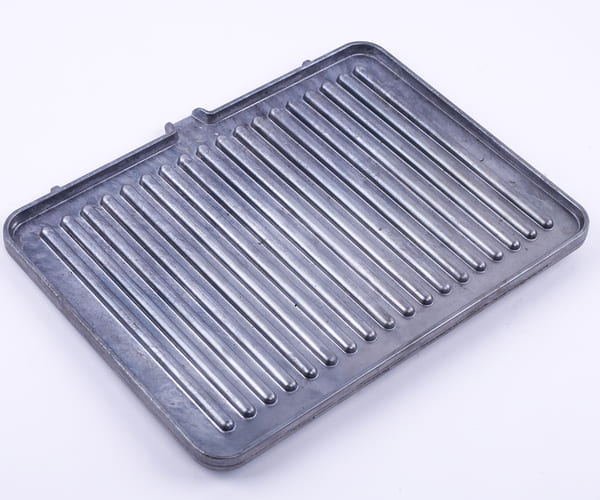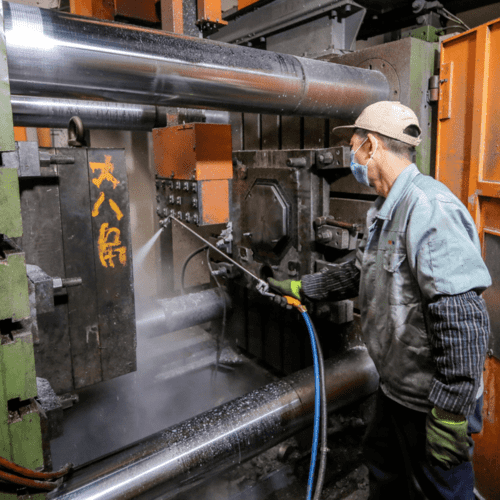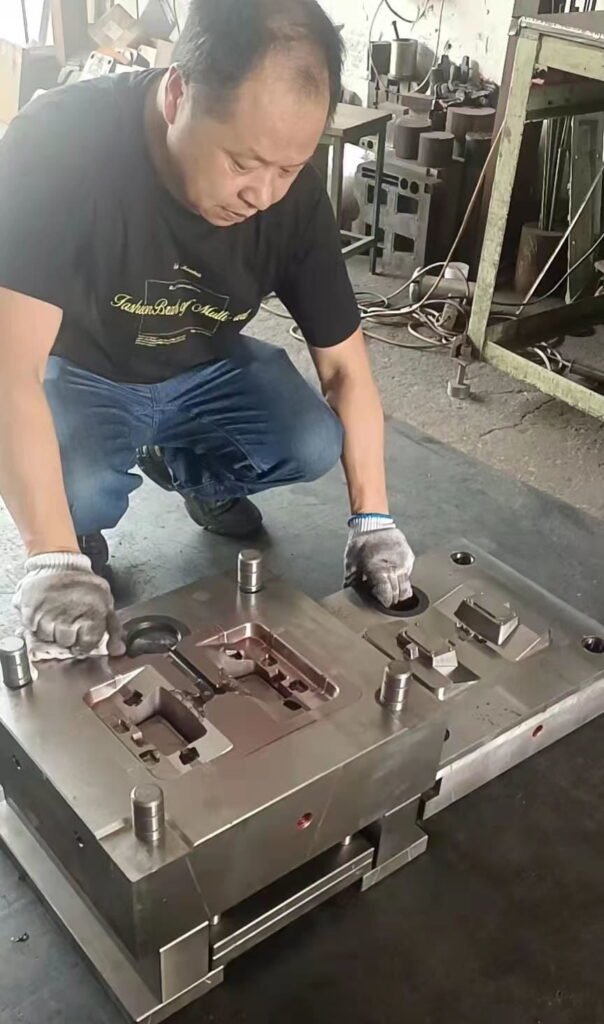After oxygen and silicon, aluminium is the third most abundant metal in the earth’s crust. It constitutes about 8% of the earth’s crust. Aluminium is produced from bauxite (the aluminium ore).
The bauxite is purified to produce aluminium oxide. Aluminium is finally extracted from the oxide by electrolysis. The abundant availability of aluminium, among others, makes it preferable in die casting.
You may wonder if an aluminium die cast is safe. Well, that’s precisely what we will be considering in this article. Follow closely.
What is aluminium die-casting?
Aluminium die-casting is an automated process of pressing aluminium alloy into a mold under high pressure and at high speed.
It’s a method of heating aluminium alloys to a high temperature till they are molten. Here, liquid aluminium is injected under high pressure into a mold.

The mold comprises two halves separated to reveal the cast aluminium parts after the molten aluminium has solidified. One of the two halves is static, while the other is mobile.
After injection of the molten metal into the mold, it solidifies. This results in cast parts with a precisely formed and smooth surface.
A single mold can be used multiple times, making aluminium die casting preferable for a bulk cast part.
Also, there are two different types of die-casting machines you can use. These are the hot chamber and cold chamber machines.

The casting process is seamless as it requires minimal assembly. You can also integrate all the assembly features, such as bosses, holes, students, etc., into the mold design at a go.
Aluminium die casting is preferable for speedy production of bulk metallic parts requiring minimal post-production machining. It produces high-quality and reliable die-casting parts.
Advantages of Die-cast aluminium
Die-cast aluminium has multiple surface-finish options. In addition, it’s highly versatile, suitable across several industries and has impressive dimensional stability.
Below are some other advantages of aluminium die-casting:
- Excellent tensile strength
- Pressure and air-tightness
- Durability
- Lightweight
- Reduced contamination
- Low porosity
- High thickness accuracy
Die-cast aluminium and Alzheimer’s
In the late 20th century, there were claims that aluminium was a cause of Alzheimer’s disease. Several patients with Alzheimer’s disease had a considerable level of aluminium in their cranial recesses.
The intake of aluminium is always from aluminium cast parts such as tins, cookware, etc.
However, In recent times, there have been reports and medical evidence to refute the correlation between aluminium/ aluminium cast parts and Alzheimer’s disease.
Nevertheless, we may not be able to conclude that there is no correlation between aluminium and Alzheimer’s.

Die-cast aluminium and cookware
• Aluminium cast parts are one of the most commonly used metals in cookware and several other utensils. Among other reasons, these cast parts are an excellent conductor of heat.
However, using these cast parts in Cookware and utensils can be damaging. If your cooking ingredients include grapefruits, tomatoes, pineapples and other acidic items,
there’s a considerable risk of having aluminium leaches into the food. This leach alters the flavour and appearance of food.

This contamination also affects food taste. For instance, cooking tomato sauce in die-cast aluminium pots gives an unpleasant metallic after-taste.
Nevertheless, the degree of contamination is minimal. This contamination is less than one-hundredth milligrams of aluminium contained in a cup of acidic food.
You may wonder if leaches always occur when you use cookware (made with aluminium parts) to prepare acidic items. Well, it doesn’t always happen. This is because:
–When aluminium cookware is exposed to oxygen, a thin layer of oxide forms on its surface. This serves as a protective barrier that protects the aluminium from additional oxidization.

After this, anodization takes place. Anodisation is a chemical process that thickens this protective layer. This layer hardens, solidifies and becomes a part of the cookware.
This means you cannot peel it off. So, the risk of aluminium leaching into your food is considerably less.
–Also, die-cast aluminium cookware comes with a ceramic coating. This scratch-resistant coating is usually about 50-1500 mm in thickness, providing extra durability to the material.
This coating forms another protective layer on the cookware’s surface and prevents further chemical leaching/ subsequent food contamination

To prevent aluminium leaching when using cookware:
• Ensure you wash your utensils thoroughly when using them for the first time. Then, season the metal with butter or oil after it has dry.
• Do not overheat the pan. At most, keep the heat to a little 200 degrees centigrade and don’t let it exceed this level.
Diseases associated with aluminium/ die-cast aluminium
Note that aluminium die-cast parts are mainly made with aluminium. They can cause diseases traceable to aluminium itself.
• Aluminium is highly biologically reactive and can impair cellular biochemistry.
• Aluminium cans made from aluminium cast parts contain E.coli. This causes diarrhoea, pneumonia, respiratory illness, etc. Also, BPA leaching from aluminium cans is a cause of heart disease.

•. Breathing a large amount of aluminium can be toxic to human bodies. It can result in abnormal chest x-rays, coughing, lung problems, etc.
However, consuming lower quantities such as 30-50 mg is not necessarily harmful to the health. So, if you consume less aluminium, you won’t be at severe risk of bodily harm.
• Die casting can also cause Aluminosis. Aluminosis is an industrial lung disease that can cause pulmonary fibrosis. It is caused by exposure to dust containing aluminium. It is more common during bauxite smelting.
• Although aluminium has not been fully recognised as carcinogenic, its production is considered human carcinogenic.

Note that when you consume materials contained in aluminium cast parts (such as tin), remnants of aluminium can get into your bodily system. However, only a tiny amount will be absorbed into your body. The bulk of the element will be excreted through the lower digestive tract.
• Aluminium has been tested to affect reproduction. It can decrease and increase the quality and quantity of sperm cells. It also causes morphologically abnormal development of the gonads.
• When you inhale freshly formed aluminium oxide, this can cause aluminium inhalation fever syndrome.
Is die-cast aluminium safe?
Yes, they are. There are now medical records disproving some diseases (such as Alzheimer’s) linked to die casting.
However, it would help if you took the necessary precaution to ensure the safety of the cast parts further.
Conclusion
In this article, we have taken you through the concept of aluminium die casting, the diseases associated with aluminium die casting, etc. We also considered the safety issues in using cookware made with die-cast aluminium. This will help you understand the pros and cons of aluminium die casting.








